Hayao Miyazaki, born on January 5, 1941, is a renowned Japanese animator, filmmaker, and manga artist. As a co-founder of Studio Ghibli, he has gained worldwide acclaim for his masterful storytelling and creation of Japanese animated feature films, solidifying his place as one of the most accomplished filmmakers in animation history.
Growing up in Tokyo City, Miyazaki’s passion for manga and animation emerged early in life. He began his career at Toei Animation in 1963, initially serving as an in-between artist before collaborating with director Isao Takahata. Notable contributions during this time include key animation for films like “Puss in Boots” and “Animal Treasure Island.”
In 1979, Miyazaki directed his first feature film, “The Castle of Cagliostro,” and co-founded Studio Ghibli in 1985. His films, including “My Neighbor Totoro,” “Princess Mononoke,” and “Spirited Away,” have received both critical acclaim and commercial success in Japan and internationally. Spirited Away notably won the Academy Award for Best Animated Feature and became the highest-grossing film in Japanese history.
Throughout his career, Miyazaki’s works have been characterized by recurring themes such as humanity’s relationship with nature, the importance of art and craftsmanship, and the challenges of maintaining pacifism in a violent world. His films often feature strong female protagonists and morally complex antagonists.
Miyazaki’s impact on animation and cinema has been widely recognized, earning him numerous awards, including the Academy Honorary Award. He continues inspiring generations of animators, directors, and writers with unparalleled creativity and storytelling prowess.
| Hayao Miyazaki | |
|---|---|
| Born: January 5, 1941 Tokyo City, Tokyo Prefecture, Empire of Japan | |
| Other names: Akitsu Saburō (秋津 三朗), Teruki Tsutomu (照樹 務) | |
| Alma mater: Gakushuin University | |
| Occupations: Animator, Filmmaker, Screenwriter, Author, Manga Artist | |
| Years active: 1963–present | |
| Employers: Toei Animation (1963–71), A-Pro (1971–73), Zuiyō Eizō (1973–75), Nippon Animation (1975–79), Tokyo Movie Shinsha (1979–82), Topcraft (1982–85), Studio Ghibli (1985–present) | |
| Spouse: | Akemi Ōta (m. 1965) |
| Children: | 2, including Goro |
| Relatives: | Daisuke Tsutsumi (nephew-in-law) |
| Japanese name: Kanji: 宮崎 駿 Kana: みやざき はやお | |
Early Life
Family Background
Hayao Miyazaki was born on January 5, 1941, in Tokyo City, Empire of Japan, as the second of four sons. His father, Katsuji Miyazaki, served as the director of Miyazaki Airplane, a company manufacturing rudders for fighter planes during World War II. Despite his father’s involvement in aviation, artistic pursuits were not prominent in the family’s dynamics.
Influence of Parents
Miyazaki’s mother, Yoshiko, played a significant role in shaping his worldview and artistic sensibilities. Despite her battle with spinal tuberculosis, she remained a resilient and intellectually stimulating presence in Miyazaki’s life. Her frugality, intellectual curiosity, and questioning of societal norms profoundly influenced Miyazaki’s outlook and later work.

Early Childhood and Education
Miyazaki’s formative years were marked by the tumultuous aftermath of war, with vivid memories of bombed-out cities and family evacuations to safer regions. Despite facing health challenges and societal pressures, his determination remained unyielding. Miyazaki’s educational journey began in various elementary schools, where his early interest in manga artistry blossomed.
Artistic Influences and Inspirations
During high school, Miyazaki’s passion for animation was sparked by seminal works like “Panda and the Magic Serpent,” Japan’s first color-animated feature film, and this pivotal moment ignited his lifelong love for animation and storytelling, setting the stage for his future endeavors.
Higher Education and Political Awakening
Following high school, Miyazaki pursued higher education at Gakushuin University, majoring in Japanese Industrial Theory. Despite his academic pursuits, his dedication to manga and animation remained unwavering. His involvement in clubs and political discussions further enriched his worldview and creative pursuits.
Emerging Artistic Identity
Miyazaki’s early years were marked by experimentation and self-discovery as an artist. His rejection of conventional manga styles and exploration of diverse themes laid the groundwork for his distinctive artistic identity. Despite facing challenges and societal expectations, Miyazaki’s unwavering passion for animation and storytelling remained steadfast.
Impact of Historical Events
Miyazaki’s formative years were deeply influenced by historical events such as the Anpo protests, which fueled his political consciousness and societal critique. These experiences played a pivotal role in shaping his artistic vision and narrative themes, setting him on a path toward becoming one of Japan’s most celebrated animators.

Career
Early Career
Hayao Miyazaki’s journey into animation began in 1963 when he secured a position at Toei Animation, just as the company concluded its regular hiring practices. His humble beginnings saw him renting a modest apartment in Tokyo while earning a salary of ¥19,500. Miyazaki’s initial roles included serving as an in-between artist on various anime projects, such as “Doggie March” and “Wolf Boy Ken,” as well as contributing to “Gulliver’s Travels Beyond the Moon” in 1965.
During his tenure at Toei, Miyazaki honed his artistic skills and became involved in labor disputes, eventually assuming the role of chief secretary for Toei’s labor union in 1964. His association with Yasuo Ōtsuka, a seasoned animator and mentor, proved instrumental in shaping his approach to animation. This collaboration reached its zenith with “The Great Adventure of Horus, Prince of the Sun” in 1968, directed by Isao Takahata, marking the beginning of a lifelong creative partnership.
Miyazaki’s departure from Toei Animation in August 1971 marked a new chapter in his career as he joined A-Pro, where he embarked on directing episodes for “Lupin the Third Part I” alongside Isao Takahata. Despite encountering setbacks with unrealized projects, such as the adaptation of Astrid Lindgren’s “Pippi Longstocking,” Miyazaki’s creative output remained prolific.
Transitioning to Zuiyō Eizō in 1973, Miyazaki continued to make waves in the animation industry with his contributions to “Heidi, Girl of the Alps” for the World Masterpiece Theater series. His directorial debut came with “Future Boy Conan” in 1978, signaling his burgeoning talent as a visionary storyteller.

Breakthrough Films
Miyazaki’s departure from Nippon Animation in 1979 marked a turning point in his career, leading him to direct his first feature film, “The Castle of Cagliostro,” in collaboration with Telecom Animation Film. This began a series of creative endeavors that would solidify his status as a visionary filmmaker.
Despite initial setbacks, such as the suspension of “Sherlock Hound” due to legal issues, Miyazaki’s unwavering dedication to his craft remained steadfast. His foray into manga with “The Journey of Shuna” and the serialized “Nausicaä of the Valley of the Wind” laid the groundwork for future cinematic triumphs.
The release of “Nausicaä of the Valley of the Wind” in 1984 catapulted Miyazaki to international acclaim, setting a precedent for his distinct narrative style and thematic depth. His subsequent founding of Nibariki Studio in 1984 signaled a new phase in his career, characterized by creative autonomy and artistic innovation.
Miyazaki’s commitment to storytelling transcended conventional boundaries, evidenced by his diverse work spanning genres and mediums. From the whimsical charm of “My Neighbor Totoro” to the epic grandeur of “Princess Mononoke,” Miyazaki’s films continue to captivate audiences worldwide, leaving an indelible mark on the animation landscape.
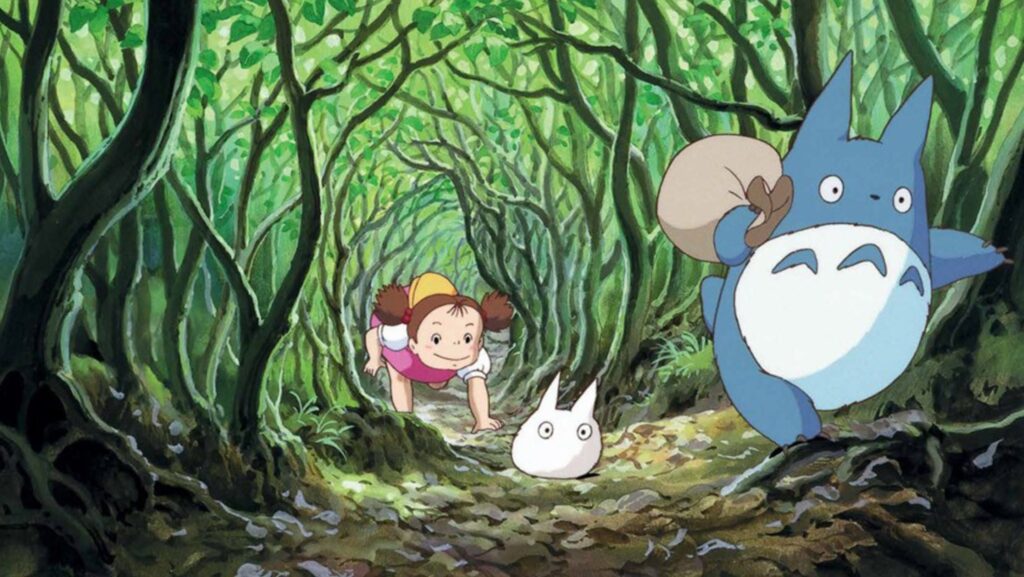
Begins Work in Animation
Hayao Miyazaki’s journey into animation began with humble beginnings as an entry-level in-betweener for Toei Animation. Assigned to projects like “Watchdog Woof-Woof” and “Wolf Boy Ken,” Miyazaki’s role as an in-betweener involved the meticulous task of bridging the gap between initial and final frames of action sequences, thus completing fluid movement within animations.
Miyazaki’s artistic prowess and prolific imagination swiftly propelled him into the animation industry. He quickly garnered more responsibilities and recognition for his contributions. Active participation in the Toei labor union further solidified his position, enabling him to rise through the union ranks while his career flourished.
Miyazaki forged lasting friendships with fellow animators, notably Isao Takahata, during this period. Their collaboration would extend well into the 2000s, marking the beginning of a fruitful creative partnership. Additionally, Miyazaki’s personal life blossomed as he married Akemi Ota in October 1965, with whom he would later have two sons.
In 1965, a pivotal opportunity arose when Miyazaki became involved in producing “The Great Adventure of Hols, Prince of the Sun” at Toei Animation. Breaking from convention, the producers opened planning sessions to the entire team, allowing Miyazaki to become a prominent contributor. Released in 1968, the film showcased Miyazaki’s emerging anime style, characterized by realism and departure from traditional Japanese animation tropes.
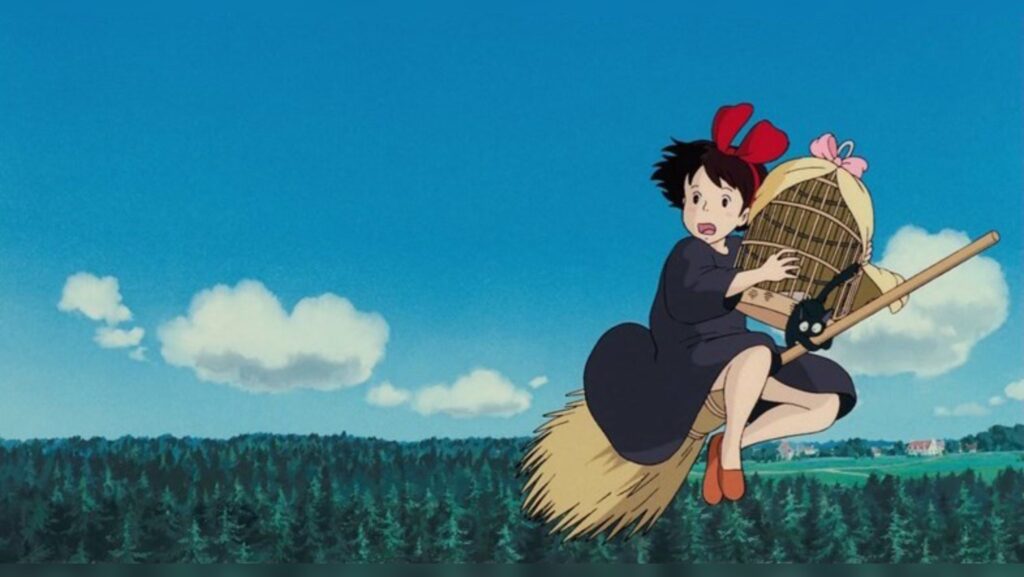
Turns Energy Toward Manga Creation
Miyazaki’s insatiable creative energy extended beyond animation into manga creation. During downtime from animation projects, he immersed himself in manga, producing original works that captivated audiences.
In 1969, Miyazaki published his first manga, “Sabaku no Tami” (People of the Desert), under the pseudonym Saburo Akitsu. Serialized in the children’s weekly paper “Shonen Shojo Shinbun,” the story delved into the eleventh-century Central Asian steppes, portraying the harsh realities of war and human nature’s resilience amidst adversity. Some enthusiasts view this work as a precursor to Miyazaki’s later masterpiece, “Nausicaä of the Valley of the Wind.”
In addition to his original manga, Miyazaki penned adaptations for two Toei Animation Studio feature films, “Puss in Boots” and “Animal Treasure Island,” based on classic literary works. Serialized in newspapers, these adaptations showcased Miyazaki’s versatility and storytelling prowess across different mediums.
Studio Ghibli
Early Films (1985–1996)
In June 1985, Hayao Miyazaki, Isao Takahata, Yasuyoshi Tokuma, and Toshio Suzuki co-founded Studio Ghibli, supported by funding from Tokuma Shoten. Their inaugural film, “Laputa: Castle in the Sky” (1986), retained the production crew from Miyazaki’s previous work, “Nausicaä of the Valley of the Wind.” Inspired by Greek architecture and European urban designs, Miyazaki infused the film’s setting with cultural influences. Additionally, elements of a Welsh mining town observed during Miyazaki’s visit in 1984 found their way into the film’s aesthetic, reflecting his admiration for the miners’ dedication to their community. “Laputa” premiered on August 2, 1986, becoming Japan’s highest-grossing animated film of the year.
Following “Laputa,” Miyazaki embarked on “My Neighbor Totoro,” released alongside Takahata’s “Grave of the Fireflies” in April 1988 to bolster Studio Ghibli’s finances. Despite critical acclaim, “My Neighbor Totoro” faced commercial challenges initially, although it later achieved cult classic status through successful merchandising endeavors. The film delved into themes of the symbiotic relationship between humanity and the environment, contrasting the technological emphasis of “Nausicaä.”
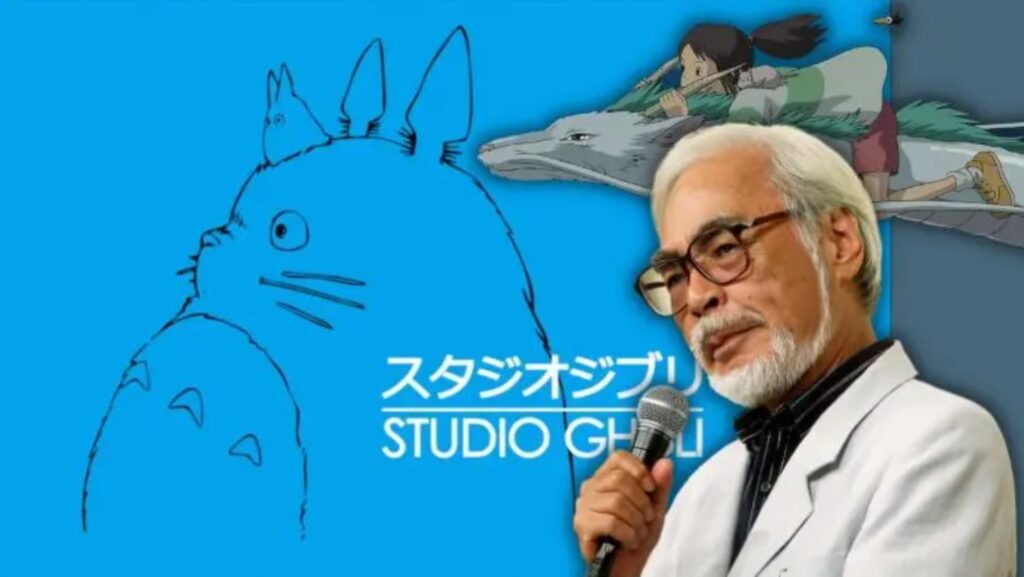
In 1987, Studio Ghibli secured the rights to adapt Eiko Kadono’s novel “Kiki’s Delivery Service.” Miyazaki’s involvement in “My Neighbor Totoro” prevented him from directing the adaptation initially, but his dissatisfaction with the screenplay prompted him to assume the directorial role. Originally conceived as a 60-minute special, the film expanded into a feature-length production under Miyazaki’s guidance, premiering on July 29, 1989, to critical and commercial success.
During this period, Miyazaki’s manga “Hikōtei Jidai” was serialized from March to May 1989, laying the groundwork for the in-flight film “Porco Rosso.” Initially conceived as a short film for Japan Airlines, Miyazaki’s vision expanded into a feature-length project, exploring anti-war themes influenced by the Yugoslav Wars. Despite initial doubts about its broad audience appeal, “Porco Rosso” surpassed expectations, becoming a critical and commercial triumph upon its theatrical release on July 18, 1992.
In August 1992, Studio Ghibli established its headquarters in Koganei, Tokyo, marking a new phase of expansion and innovation. Miyazaki’s creative endeavors extended beyond traditional filmmaking, as demonstrated by his television spots for Nippon Television Network in November 1992. These brief yet captivating advertisements showcased Miyazaki’s storytelling prowess and visual flair.
Furthermore, Miyazaki’s collaboration with director Yoshifumi Kondō on “Whisper of the Heart” (1995) exemplified Studio Ghibli’s commitment to nurturing emerging talents. Miyazaki contributed to the film’s development as a writer and storyboard artist, further enriching the studio’s diverse portfolio of projects.
Through their early films, Studio Ghibli, under Miyazaki’s leadership, established itself as a powerhouse in animation, blending artistry with social commentary to captivate audiences worldwide.
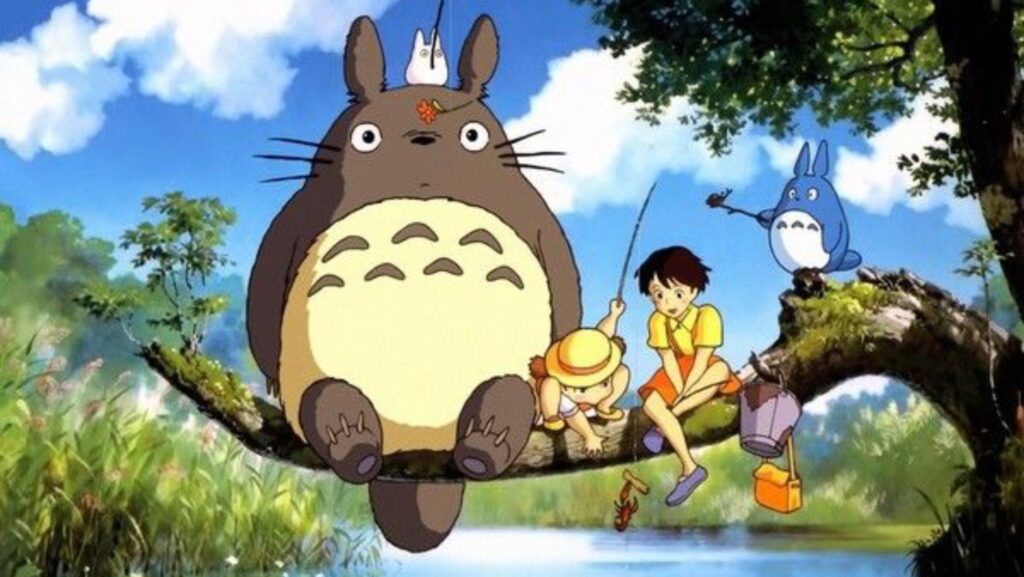
Nausicaa’s Success and the Birth of Studio Ghibli
Nausicaa’s Triumph
- Hayao Miyazaki’s film “Nausicaa of the Valley of the Wind” marked a turning point in his career, achieving financial success and critical acclaim in Japan.
- The film’s reception solidified Miyazaki’s standing as a significant figure in Japanese animation, paving the way for his future endeavors.
Formation of Studio Ghibli
- In 1984, seeking greater creative control, Miyazaki partnered with Isao Takahata, and together, they founded Studio Ghibli in 1985.
- Studio Ghibli quickly emerged as a powerhouse in Japanese animation, comparable to the stature of Walt Disney Studios in the West.
Early Challenges and Successes
- Studio Ghibli’s inaugural production, “Castle in the Sky” (1986), marked the beginning of a prolific era in Japanese animation.
- Despite initial successes in Japan, the studio faced challenges with the Western release of “Nausicaa,” which underwent heavy edits and poor dubbing, leading to a decade-long hiatus in Western distribution.
Creative Output and Expansion
- Studio Ghibli flourished throughout the late 1980s and early 1990s with a string of iconic films directed by Miyazaki and Takahata.
- Notable releases included “Grave of the Fireflies” (1988), directed by Takahata, and Miyazaki’s “My Neighbor Totoro” (1988) and “Kiki’s Delivery Service” (1989).
Studio Growth
- With the success of “Kiki’s Delivery Service,” Studio Ghibli embarked on expansion, supported by financing from Tokuma Corporation.
- The construction of new facilities coincided with the premiere of Miyazaki’s “Porco Rosso” (1992), showcasing the studio’s commitment to quality animation.
Miyazaki’s Ascendancy
- By the 1990s, Hayao Miyazaki had become a towering figure in Japanese animation. His films often dominated the box office and shaped cultural discourse.
- “Princess Mononoke” (1997) solidified Miyazaki’s status as a master storyteller and became the highest-grossing film in Japan at the time.
Spirited Resilience
- Despite initial plans for retirement, Miyazaki returned to the studio following the untimely death of his successor, Yoshifumi Kondo.
- “Spirited Away” (2001) garnered international acclaim, surpassing previous box office records and earning numerous prestigious awards.
Continued Innovation
- Miyazaki’s commitment to storytelling and animation remained unwavering, evident in his adaptation of “Howl’s Moving Castle” (2004), which showcased groundbreaking animation technology.
- Despite his relentless work ethic, signs of Miyazaki’s aging began to emerge, yet his dedication to his craft remained undiminished.
Global Emergence (1997–2008)
From the late 1990s to the early 2000s, Hayao Miyazaki and Studio Ghibli embarked on a remarkable journey that solidified their presence on the global stage.
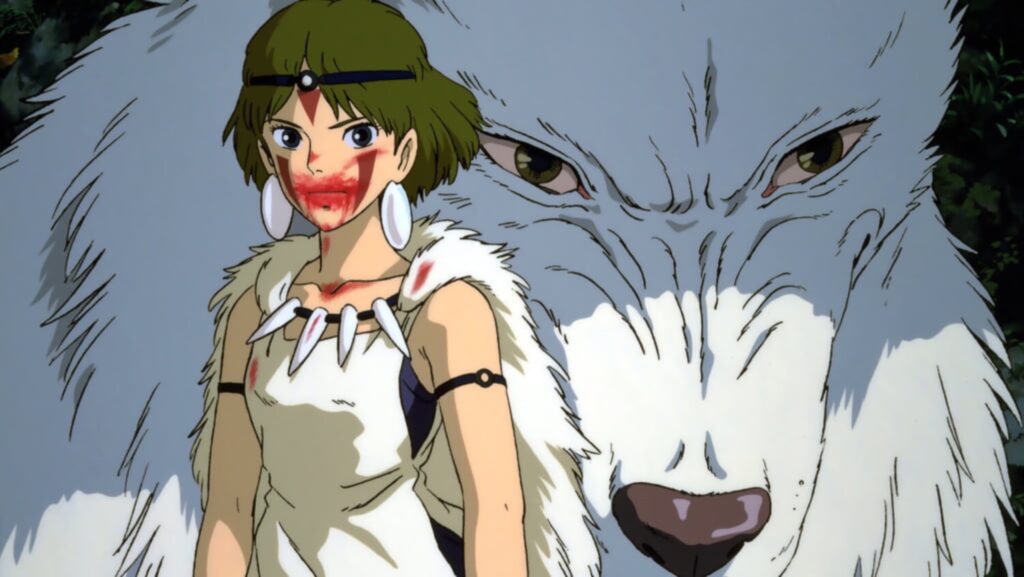
Princess Mononoke: An Epic Tale (1997)
Miyazaki’s creative journey during this period began with conceptualizing “Princess Mononoke.” The groundwork for this epic narrative was laid in August 1994, drawing upon Miyazaki’s early sketches and musings from the late 1970s. However, the production faced hurdles, with Miyazaki experiencing writer’s block. Amidst this, he ventured into uncharted territories with “On Your Mark,” a music video for the song by Chage and Aska. This endeavor marked Miyazaki’s experimentation with computer animation, a technique that would later find its place in “Princess Mononoke.”
The film, released in 1997, showcased Miyazaki’s innovative use of 3D rendering to depict intricate details like “demon flesh,” seamlessly integrated with hand-drawn animation. Set against the backdrop of ancient forests, inspired by Miyazaki’s expedition to Yakushima, “Princess Mononoke” delved into ecological and political themes reminiscent of “Nausicaä of the Valley of the Wind.” Despite its ambitious scope and budget, the film received critical acclaim and emerged as a commercial success, becoming the highest-grossing film in Japan for a significant period.
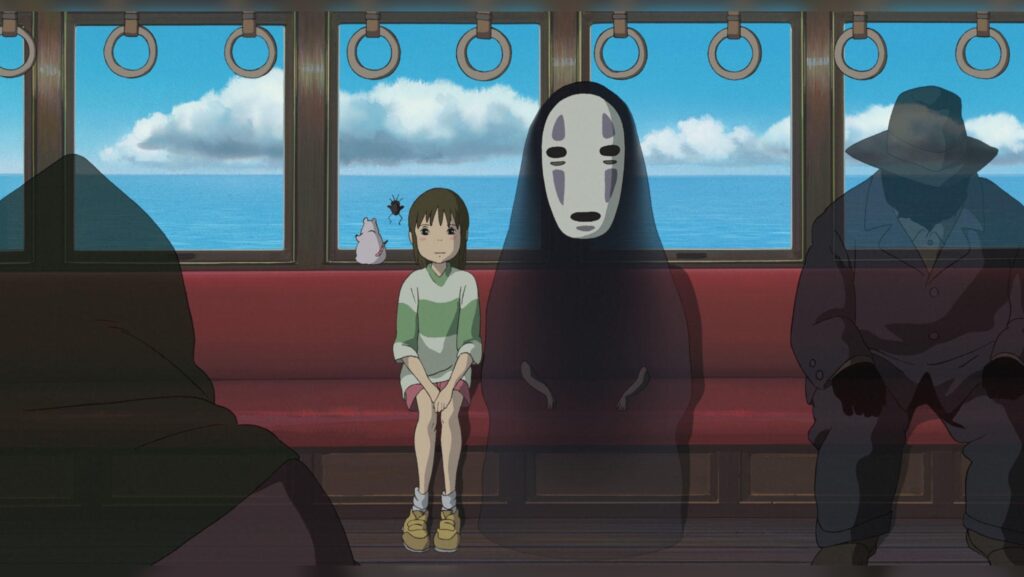
Spirited Away: A Spirited Masterpiece (2001)
Following the monumental success of “Princess Mononoke,” Miyazaki embarked on another visionary project, “Spirited Away.” Conceived during a mountain retreat with family and friends, this enchanting tale captivated audiences with its mesmerizing narrative and rich symbolism. Set in a realm of spirits, the film served as a poignant commentary on human greed, mirroring Japan’s tumultuous economic landscape.
Released in 2001, “Spirited Away” garnered universal acclaim, earning accolades such as the Japan Academy Film Prize for Picture of the Year and the prestigious Academy Award for Best Animated Feature. Its commercial success further solidified Studio Ghibli’s position as a global powerhouse in animation.
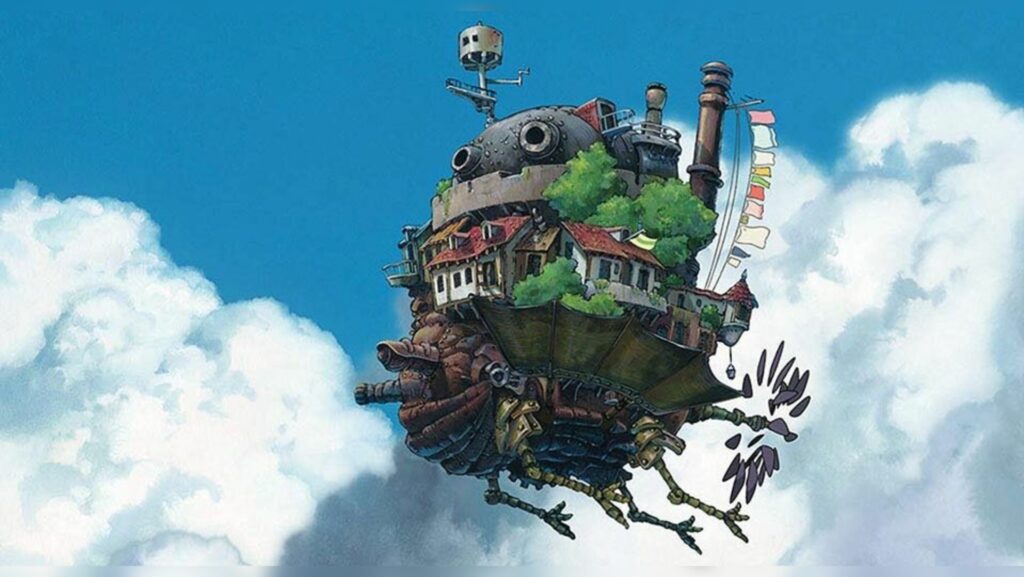
Howl’s Moving Castle and Beyond (2004)
In the ensuing years, Studio Ghibli continued to push the boundaries of storytelling and animation with projects like “Howl’s Moving Castle.” Inspired by Diana Wynne Jones’ novel, Miyazaki’s adaptation enchanted audiences with its imaginative world and compelling characters. The film received critical acclaim and garnered nominations for prestigious awards like the Academy Award for Best Animated Feature.
Studio Ghibli’s influence extended beyond Japan’s borders, so its productions resonated with audiences worldwide, reflecting universal themes and profound storytelling. Despite challenges such as leadership transitions and creative disagreements, Studio Ghibli remained steadfast in its commitment to crafting timeless tales that transcended cultural boundaries.
The late 1990s to the early 2000s marked a transformative period for Studio Ghibli, as it emerged as a global powerhouse in animation under the visionary leadership of Hayao Miyazaki. Through groundbreaking projects like “Princess Mononoke,” “Spirited Away,” and “Howl’s Moving Castle,” Studio Ghibli has captivated audiences with its unparalleled storytelling and artistic prowess, leaving an indelible mark on the world of animation. As Studio Ghibli continues to inspire generations of viewers, its legacy as a beacon of creativity and innovation remains unrivaled.

Later Films (2009–present)
Hayao Miyazaki’s creative journey extended into the latter part of his career, marked by a series of thought-provoking films that continued to captivate audiences worldwide. This section delves into Miyazaki’s notable works from 2009 onwards, exploring his later films’ themes, inspirations, and impact.
The Wind Rises (2013)
In early 2009, Miyazaki embarked on a new project: crafting a manga titled “Kaze Tachinu” (The Wind Rises). The manga chronicled the life of Jiro Horikoshi, the designer of the Mitsubishi A6M Zero fighter. Serialized in Model Graphix magazine, the manga set the stage for Miyazaki’s cinematic adaptation, inspired by Horikoshi’s pursuit of beauty amidst war.
Miyazaki’s decision to adapt “The Wind Rises” to film stemmed from Horikoshi’s poignant quote, which encapsulates the desire to create beauty in adversity. Drawing from Tatsuo Hori’s novel “The Wind Has Risen,” Miyazaki interwove personal narratives, including the poignant tale of Naoko Satomi, echoing themes of love and loss.
Released in 2013, “The Wind Rises” garnered critical acclaim for its masterful storytelling and visual splendor. Despite Miyazaki’s assertion that the film did not aim to condemn war outright, its pacifist undertones resonated deeply with audiences. The film’s accolades included the Japan Academy Film Prize for Animation of the Year and an Academy Award nomination for Best Animated Feature.
Retirement and Beyond
Following the success of “The Wind Rises,” Miyazaki announced his retirement from feature film production in 2013, citing his advancing age. Despite this, his creative spirit remained undiminished as he contributed to the Studio Ghibli Museum and pursued new artistic endeavors.
Miyazaki’s retirement was a dynamic phase of ongoing projects and creative exploration. He developed the computer-animated short film “Boro the Caterpillar” and worked on the manga “Teppo Samurai.” A documentary titled “10 Years with Hayao Miyazaki” also offered insight into his creative process and legacy.
In a surprising turn of events, Miyazaki returned to filmmaking with “Kimi-tachi wa Dō Ikiru ka” (The Boy and the Heron), defying retirement expectations. Released in 2023, the film garnered widespread acclaim and earned Miyazaki his second Academy Award for Best Animated Feature, cementing his status as a visionary filmmaker.
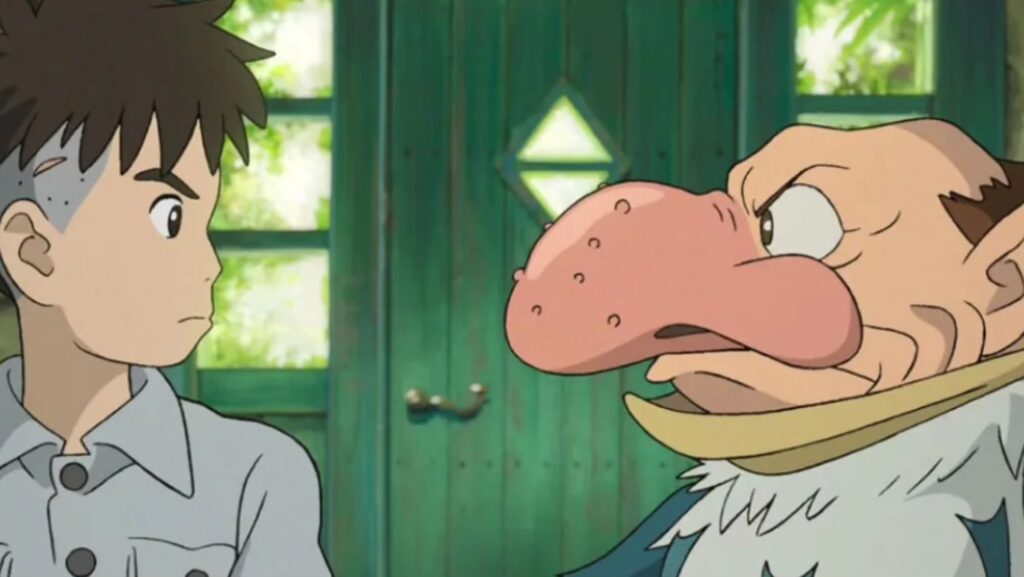
Hayao Miyazaki’s later works testify to his enduring creativity and commitment to storytelling. From “The Wind Rises” to “The Boy and the Heron,” Miyazaki’s films continue to inspire and provoke thought, leaving an indelible mark on animation and beyond. As he enters the twilight of his career, Miyazaki’s legacy remains unparalleled, shaping the landscape of cinema for generations to come.
Views
Hayao Miyazaki, celebrated for his animation prowess, is equally renowned for his outspoken views on various subjects, ranging from the animation industry to political affairs.
Critique of the Animation Industry
Miyazaki has been a vocal critic of the animation industry, both domestically in Japan and internationally. He contends that many animators need a deeper understanding of their subjects, resulting in a disconnect between animated portrayals and reality. In a television interview in January 2014, he lamented that much of Japanese animation is produced without sufficient observation of real people, attributing this deficiency to animators indifferent to human interaction. He famously remarked, “It’s produced by humans who can’t stand looking at other humans… And that’s why the industry is full of otaku !” This critique underscores Miyazaki’s belief in grounding artistic expression in genuine human experiences.
Disapproval of Otaku Culture
Miyazaki’s criticism extends to otaku culture, particularly its fixation on specific subjects such as guns and fighter aircraft. He has expressed disdain for what he perceives as a fetishistic obsession among otaku, refusing to associate himself with such tendencies. His disapproval reflects his commitment to a more holistic and socially aware approach to animation.
Political Commentary
Beyond animation, Miyazaki has not shied away from engaging in political discourse. He has openly criticized policies and political figures in Japan and abroad. In 2013, he condemned Japanese Prime Minister Shinzo Abe’s proposed Constitutional amendment, allowing for revising clauses outlawing war to settle international disputes. Miyazaki deemed Abe’s aspirations to revise the Constitution “despicable” and cautioned against hasty alterations that could undermine fundamental principles.
Miyazaki voiced his dissent in subsequent years, particularly regarding Japan’s historical accountability and international relations. He advocated for acknowledging Japan’s past military aggression, calling for sincere apologies to victims, and advocating equitable resolutions to territorial disputes. Miyazaki’s unwavering stance on historical reconciliation and diplomatic transparency reflects his commitment to ethical governance and international cooperation.
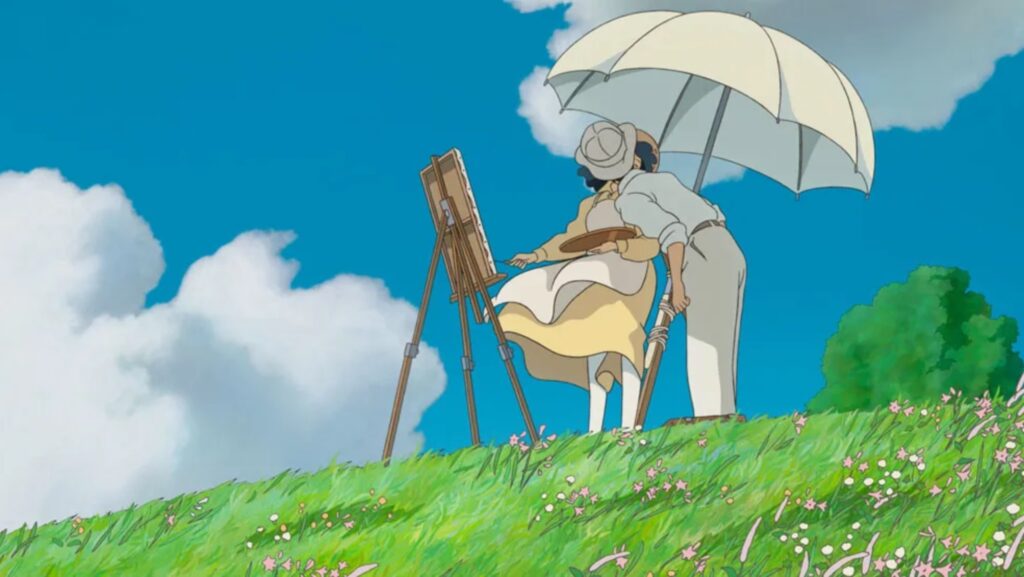
Global Activism
Miyazaki’s activism extends beyond Japanese borders. In 2003, he boycotted the 75th Academy Awards in protest of the United States‘ involvement in the Iraq War, citing his refusal to visit a country engaged in military conflict. Despite initially withholding public statements at the behest of his producer, Miyazaki later lifted his boycott, attending events such as San Diego Comic-Con International.
Moreover, Miyazaki has offered commentary on global events, such as the terrorist attack at the offices of Charlie Hebdo in France. He criticized the magazine’s decision to publish controversial content, advocating for satire that targets politicians rather than cultural or religious groups.
Miyazaki has also commented on Brexit and Donald Trump’s presidency in light of geopolitical shifts. He expressed concern over economic disparities and political polarization, lamenting the rise of populist rhetoric and the erosion of international cooperation.
Hayao Miyazaki’s views, whether on animation, politics, or global affairs, reflect a deep-seated commitment to authenticity, ethics, and social responsibility. His critiques of the animation industry highlight the importance of grounding artistic expression in human experiences, while his political activism underscores a dedication to ethical governance and historical reconciliation. As a global figure, Miyazaki’s perspectives offer valuable insights into contemporary issues, prompting reflection and dialogue on various topics.
Themes
Feminism and Empowerment
Miyazaki’s films are celebrated for portraying strong, independent female characters who defy traditional gender roles. Suzuki, a collaborator of Miyazaki, commended him for his feminist perspective, particularly in his treatment of female workers. Miyazaki admired brave, self-sufficient female protagonists who fought for their beliefs without relying on a savior.
Films like “Nausicaä of the Valley of the Wind” received acclaim for their positive portrayal of women, showcasing complex and individualistic traits absent from mainstream Hollywood productions.
Female characters in Miyazaki’s works are not objectified or sexualized but depicted with depth and nuance. They embody a “coming of age” journey as they discover their strengths and personalities. This feminist lens extends beyond mere representation, challenging societal expectations and exploring themes of selfhood and expression, as seen in characters like San from Princess Mononoke.

Environmentalism and Pacifism
Miyazaki’s films often convey messages of environmentalism, emphasizing the Earth’s fragility and the consequences of human exploitation. His upbringing during rampant industrialization profoundly impacted his worldview, with a deep-seated frustration towards the destruction of nature in the name of economic progress. Antagonists in Miyazaki’s narratives often symbolize the destructive force of unchecked greed and political domination, echoing his critique of capitalism and communism. This environmental consciousness intertwines with themes of pacifism, as Miyazaki condemns the futility and devastation of war. Characters in his films navigate complex moral landscapes, grappling with the necessity of violence while striving for peace and understanding. Miyazaki’s narratives reject simplistic hero-villain dichotomies, instead emphasizing the transformative power of empathy and compassion in resolving conflicts.
Love, Family, and Wonder
Central to Miyazaki’s storytelling is a celebration of love, family, and the enduring sense of wonder in young people. His films explore familial relationships’ dynamics, depicting idealized and dysfunctional families as vehicles for personal growth and mutual support. Themes of love and romance are woven throughout his narratives, but Miyazaki emphasizes the interconnectedness of individuals within communities. He expresses concern for the impact of modern society on Japanese youth, lamenting the erosion of traditional values in the face of overconsumption and technological advancement. Yet, amidst these challenges, Miyazaki’s films offer a beacon of hope, championing the resilience of the human spirit and the transformative power of love and imagination.
In summary, Miyazaki’s thematic tapestry encompasses various social, environmental, and philosophical concerns, underscored by a profound belief in the potential for positive change through empathy, resilience, and collective action.
Creation Process and Influences
Miyazaki’s Unique Approach to Filmmaking
Hayao Miyazaki diverges from conventional screenplay development in his creative process, preferring to craft the narrative as he designs storyboards. This unconventional method allows the story to evolve organically throughout production, keeping the creative process fluid and dynamic. Miyazaki emphasizes this approach: “We never know where the story will go, but we just keep working on the film as it develops.” Such flexibility allows him to explore new narrative avenues and refine the story until it reaches its full potential.

Embrace of Traditional Animation Techniques
Across all his films, Miyazaki remains steadfast in his commitment to traditional animation methods, meticulously drawing each frame by hand. While he has incorporated computer-generated imagery (CGI) in select projects, such as “Princess Mononoke,” Miyazaki ensures that CGI complements rather than overwhelms the hand-drawn aesthetic. He maintains a delicate balance between manual and digital techniques, preserving the essence of 2D animation while leveraging technology to enhance visual richness.
Attention to Detail and Hands-On Oversight
Miyazaki’s meticulous oversight of every frame in his films exemplifies his dedication to his craft. He maintains a hands-on approach throughout production, from character designs to background art. Miyazaki personally creates original drafts for character designs, providing animation directors with reference sheets that capture his distinct artistic style. This level of involvement ensures consistency and fidelity to his vision, resulting in cohesive and visually captivating storytelling.
Influences on Miyazaki’s Creative Vision
Japanese Artistic Influences
Miyazaki draws inspiration from a rich tapestry of Japanese artists, including Sanpei Shirato, Osamu Tezuka, Soji Yamakawa, and Isao Takahata. Their contributions to manga and animation have profoundly shaped Miyazaki’s artistic sensibilities, influencing his storytelling techniques and visual aesthetics.
Western Literary and Artistic Influences
Beyond Japan, various Western authors and artists enrich Miyazaki’s creative vision. Works by Frédéric Back, Lewis Carroll, Roald Dahl, Jean Giraud, Paul Grimault, and Ursula K. Le Guin have left an indelible mark on his films, inspiring themes, characters, and narrative motifs.
Cinematic Inspirations
Miyazaki’s cinematic influences encompass a broad spectrum of films and filmmakers, both Eastern and Western. “Animal Farm,” “The Snow Queen,” and “The King and the Mockingbird” are among the seminal works that have profoundly impacted Miyazaki’s artistic evolution. Of particular significance is “The Snow Queen,” credited as the catalyst for Miyazaki’s career trajectory, influencing his training and thematic exploration.
Personal and Childhood Influences
Miyazaki’s personal experiences and childhood memories also inform his creative output. When animating young children, he often draws inspiration from his friends’ children and recollections of his upbringing. These intimate insights imbue his characters with authenticity and emotional resonance, adding depth to his storytelling.
Through a synthesis of diverse influences and a steadfast commitment to craftsmanship, Miyazaki continues to push the boundaries of animation, crafting timeless stories that resonate with audiences worldwide.

Personal Life
Hayao Miyazaki’s personal life reflects a complex interplay between his familial relationships, career aspirations, and the challenges of balancing work and family.
Marriage and Family
Marriage to Akemi Ōta
Miyazaki tied the knot with fellow animator Akemi Ōta in October 1965, having crossed paths while working at Toei Animation. Their union bore two sons: Goro, born in January 1967, and Keisuke, born in April 1969.
Impact of Fatherhood
The arrival of his sons marked a transformative phase in Miyazaki’s life. He acknowledged that fatherhood fundamentally changed him, striving to create works that would resonate with his children. However, the demands of his burgeoning career often strained his relationship with his family.
Parenting Challenges
Struggles with Work-Life Balance
Miyazaki attempted to balance his professional commitments with family responsibilities, enrolling his eldest son, Goro, in preschool while both parents pursued their careers. However, witnessing Goro’s fatigue on the journey home prompted a pivotal decision for Miyazaki, leading his wife to stay home and care for their children while he focused on his work.
Absence and Impact on Relationships
Despite his intentions, Miyazaki’s relentless dedication to his craft resulted in prolonged absences from his children’s lives. Goro, in particular, sought to understand his father through his works, as verbal communication between them remained sparse. Reflecting on his parenting, Miyazaki expressed regret over his shortcomings, acknowledging that while endeavoring to be a good father, his priorities often skewed towards his professional pursuits.
Professional Pursuits of Miyazaki’s Family
Goro Miyazaki’s Career
Goro initially ventured into landscape design before transitioning to roles at the Ghibli Museum, where he contributed significantly to its aesthetic appeal. Despite strained familial ties, Goro praised his father’s directorial prowess and recognized his achievements in animated filmmaking.
Keisuke Miyazaki’s Endeavors
Keisuke pursued a career in forestry, studying at Shinshu University and subsequently establishing himself as a wood artist. His creative endeavors extended to Miyazaki’s cinematic works, and he contributed a woodcut print featured in “Whisper of the Heart.”
Extended Family Connections
Influence of Extended Family
Miyazaki’s niece, Mei Okuyama, played a significant role in inspiring the character Mei in “My Neighbor Totoro.” Her marriage to animation artist Daisuke Tsutsumi further intertwines familial connections within the creative sphere, reflecting the profound impact of Miyazaki’s family on his artistic legacy.
In navigating the complexities of family dynamics and professional ambitions, Hayao Miyazaki’s journey underscores the multifaceted nature of creativity, sacrifice, and familial bonds.

Legacy
Hayao Miyazaki: A Titan of Animation
Hayao Miyazaki’s unparalleled contributions to the world of animation have cemented his status as a legendary figure in the industry. His legacy transcends borders and generations, leaving an indelible mark on the art form and inspiring countless artists worldwide.
Pioneering Craftsmanship and Humanity
Miyazaki’s impact on animation is profound, earning him the title of the “godfather of animation in Japan” by BBC’s Tessa Wong in 2016. His meticulous craftsmanship and profoundly humanistic approach to storytelling have set him apart as a visionary artist. Through his films, Miyazaki explores themes of love, resilience, and the human condition, resonating with audiences of all ages.
Global Recognition and Influence
Courtney Lanning of Arkansas Democrat-Gazette hails Miyazaki as one of the world’s most excellent animators, placing him in the esteemed company of Osamu Tezuka and Walt Disney. His work has shaped the future of animation and left an indelible impact on filmmaking as a whole. Swapnil Dhruv Bose of Far Out Magazine notes that Miyazaki’s films have sparked imagination and wonder, allowing generations of viewers to find magic in the everyday.
Exacting Standards and Artistic Vision
Richard James Havis of South China Morning Post lauds Miyazaki as a genius who sets exacting standards for himself, his peers, and studio staff. Paste’s Toussaint Egan describes Miyazaki as one of anime’s great auteurs, whose singular thematic vision and unmistakable aesthetic have captivated audiences worldwide. Miyazaki’s commitment to artistic excellence and storytelling prowess inspires admiration and reverence.
Enduring Inspiration
Miyazaki’s influence extends beyond animation, with numerous directors, writers, and artists citing him as a source of inspiration. Wes Anderson, James Cameron, Guillermo del Toro, and Steven Spielberg are among the many luminaries who admire Miyazaki’s work. His impact is evident in the creative endeavors of filmmakers, game designers, and television producers, shaping the landscape of entertainment for generations to come.
The Search for Succession
As Studio Ghibli seeks to secure a successor to Miyazaki and his longtime collaborator Toshio Suzuki, the studio faces the daunting task of finding individuals capable of carrying on their legacy. Despite considering candidates like Miyazaki’s son Goro, the studio has yet to identify a successor. The challenge of filling Miyazaki’s shoes underscores the magnitude of his contributions and the enduring legacy he leaves behind.
Hayao Miyazaki’s influence on animation and storytelling is immeasurable, and his legacy is etched into the annals of cinematic history. As his films continue to captivate audiences and inspire global creators, Miyazaki’s enduring impact ensures that his spirit will live on in the hearts and minds of future generations.
Selected Filmography
Hayao Miyazaki’s illustrious filmmaking career spans several decades and is marked by a diverse and captivating array of animated masterpieces. Miyazaki’s films have left an indelible mark on animation, from enchanting tales of whimsy to epic adventures exploring the human condition. This section provides an overview of some of his most renowned works, showcasing the breadth and depth of his creative genius.
The Early Years (1979-1989)
The Castle of Cagliostro (1979)
- Synopsis: Miyazaki’s directorial debut, this action-packed adventure follows master thief Arsène Lupin III as he embarks on a daring escapade to uncover the secrets of the enigmatic Castle of Cagliostro.
- Significance: While not originally a Studio Ghibli production, this film laid the groundwork for Miyazaki’s future endeavors, showcasing his talent for crafting compelling narratives and dynamic characters.
Nausicaä of the Valley of the Wind (1984)
- Synopsis: Set in a post-apocalyptic world ravaged by ecological devastation, this epic fantasy follows Princess Nausicaä as she seeks to protect her people and restore harmony to a world on the brink of destruction.
- Significance: A landmark film in Miyazaki’s career, “Nausicaä” established many themes and motifs that would become synonymous with his work, including environmentalism and strong, independent female protagonists.
Laputa: Castle in the Sky (1986)
- Synopsis: This enchanting tale follows young orphan Sheeta and resourceful miner Pazu as they embark on a quest to find the legendary floating city of Laputa, pursued by government agents and sky pirates.
- Significance: “Castle in the Sky” exemplifies Miyazaki’s talent for crafting sweeping adventures filled with memorable characters and breathtaking visuals, setting a high standard for future Studio Ghibli productions.
My Neighbor Totoro (1988)
- Synopsis: A heartwarming story of friendship and imagination, “My Neighbor Totoro” follows two young sisters, Satsuki and Mei, as they encounter magical creatures in the idyllic countryside surrounding their new home.
- Significance: Widely regarded as one of Miyazaki’s most beloved films, “My Neighbor Totoro” captures the innocence and wonder of childhood, earning a permanent place in the hearts of audiences worldwide.
Kiki’s Delivery Service (1989)
- Synopsis: This charming coming-of-age tale follows young witch Kiki as she embarks on a year-long journey of self-discovery, operating a delivery service in a quaint seaside town.
- Significance: With its endearing characters and enchanting setting, “Kiki’s Delivery Service” embodies Miyazaki’s ability to craft stories that resonate with audiences of all ages, exploring themes of independence and finding one’s place in the world.
Continued Success and Innovation (1992-2013)
Porco Rosso (1992)
- Synopsis: Set in the Adriatic Sea during the interwar period, “Porco Rosso” follows the adventures of a dashing flying ace who is also cursed with the appearance of a pig.
- Significance: With its unique blend of humor, romance, and aerial action, “Porco Rosso” showcases Miyazaki’s versatility as a storyteller, delivering a captivating tale that transcends traditional genre boundaries.
Princess Mononoke (1997)
- Synopsis: A sprawling epic set in medieval Japan, “Princess Mononoke” explores the conflict between industrialization and nature as a young warrior named Ashitaka is embroiled in a struggle between forest spirits and human settlers.
- Significance: “Princess Mononoke” is a visually stunning and thematically rich film that tackles complex environmental and ethical issues, cementing Miyazaki’s reputation as a master storyteller unafraid to tackle weighty themes.
Spirited Away (2001)
- Synopsis: Winner of the Academy Award for Best Animated Feature, “Spirited Away” follows a young girl named Chihiro as she navigates a surreal and magical realm populated by spirits, witches, and other fantastical creatures.
- Significance: Widely regarded as one of Miyazaki’s crowning achievements, “Spirited Away” is a mesmerizing and immersive experience that captivates audiences with its richly detailed world and compelling characters.
Howl’s Moving Castle (2004)
- Synopsis: Based on the novel by Diana Wynne Jones, “Howl’s Moving Castle” follows a young woman named Sophie who is transformed into an old woman by a witch’s curse and her adventures with the enigmatic wizard Howl.
- Significance: With its intricate plot, stunning visuals, and memorable characters, “Howl’s Moving Castle” showcases Miyazaki’s ability to blend fantasy, romance, and social commentary into a captivating narrative that resonates with audiences.
Ponyo (2008)
- Synopsis: Inspired by Hans Christian Andersen’s “The Little Mermaid,” “Ponyo” tells the story of a young goldfish who dreams of becoming human and the boy who befriends her, leading to magical and sometimes dangerous adventures.
- Significance: “Ponyo” is a whimsical and visually stunning film that celebrates the wonders of childhood imagination and the bond between humans and nature, embodying Miyazaki’s enduring themes of innocence and wonder.
Recent Works and Legacy (2013-Present)
The Wind Rises (2013)
- Synopsis: A fictionalized biopic of aircraft designer Jiro Horikoshi, “The Wind Rises” explores the intersection of art, ambition, and morality in pre-World War II Japan.
- Significance: Miyazaki’s purported final feature film, “The Wind Rises,” poignantly reflects on the nature of creativity, innovation, and pursuing one’s dreams, leaving behind a legacy of artistic excellence and cultural impact.
The Boy and the Heron (2023)
- Synopsis: Described as a “big, fantastical film,” “The Boy and the Heron” follows a young boy named Mahito Maki who discovers a fantastical world inhabited by a talking grey heron after moving to the countryside following his mother’s death.
- Significance: While details about this film are limited, it represents Miyazaki’s continued commitment to storytelling and creative exploration, further solidifying his status as a visionary filmmaker with an enduring legacy.
This overview of Hayao Miyazaki’s selected filmography highlights the breadth and depth of his contributions to animation. It showcases his ability to captivate audiences with timeless stories and enchanting visuals that transcend cultural and generational boundaries. From his early works to his most recent endeavors, Miyazaki’s films inspire and delight audiences worldwide, leaving an indelible mark on the medium of animation and the hearts of viewers everywhere.
Awards and Nominations
Recognition in Film Awards
Throughout his illustrious career, Hayao Miyazaki has garnered widespread acclaim and numerous awards for his contributions to animation. His films have received accolades from prestigious organizations and festivals, cementing his status as one of the most influential figures in the industry.
Miyazaki’s early works, including “The Castle of Cagliostro” (1979) and “Nausicaä of the Valley of the Wind” (1984), were recognized with the Ōfuji Noburō Award at the Mainichi Film Awards. This prestigious honor was bestowed upon him multiple times for his exceptional storytelling and artistic vision.
In subsequent years, Miyazaki continued to captivate audiences and critics alike with masterpieces such as “My Neighbor Totoro” (1988), “Kiki’s Delivery Service” (1989), and “Porco Rosso” (1992). These films earned him the Mainichi Film Award for Best Animation Film, further solidifying his reputation as a pioneering animator.
The pinnacle of Miyazaki’s career came with the release of “Spirited Away” (2001), a cinematic masterpiece that enchanted audiences worldwide. The film received widespread critical acclaim and was honored with numerous awards, including the Academy Award for Best Animated Feature. This historic achievement marked a significant milestone for Miyazaki and the animation industry.
In addition to “Spirited Away,” Miyazaki’s collaboration with Studio Ghibli has yielded several other award-winning films, including “Princess Mononoke” (1997) and “Howl’s Moving Castle” (2004). These films received the Academy Award for Best Animated Feature nominations, further showcasing Miyazaki’s unparalleled talent and storytelling prowess.
Honors and Cultural Contributions
In recognition of his outstanding cultural contributions, the Japanese government named Hayao Miyazaki a Person of Cultural Merit in November 2012. This prestigious accolade is a testament to Miyazaki’s enduring impact on Japanese culture and society and his dedication to advancing the art of animation.
Miyazaki has received numerous awards and honors from various organizations and festivals. These include eight Tokyo Anime Awards, eight Kinema Junpo Awards, and six Japan Academy Film Prizes. His films have also been recognized internationally, receiving the Annie Awards, Anime Grand Prix, and Venice Film Festival accolades.
Miyazaki’s unparalleled talent, creativity, and commitment to storytelling have earned him a place among the most esteemed figures in animation history. His legacy continues to inspire and influence generations of filmmakers and animators worldwide, ensuring his contributions to the art form will be celebrated for years.
See Also
- Hayao Miyazaki Caricature
- Hayao Miyazaki as Totoro
- Hayao Miyazaki as Kiki
- Color Caricature of Hayao Miyazaki
- Happy face of Hayao Miyazaki
- Best of Hayao Miyazaki Caricatures, 10+ (Open list)
FAQs about Hayao Miyazaki
Who is Hayao Miyazaki?
Hayao Miyazaki is a renowned Japanese animator, filmmaker, screenwriter, author, and manga artist. He is widely regarded as one of the greatest animation directors in the world, known for his imaginative storytelling and visually stunning films.
What are some of Hayao Miyazaki’s most famous works?
Miyazaki is celebrated for numerous iconic films, including “Spirited Away,” “My Neighbor Totoro,” “Princess Mononoke,” “Howl’s Moving Castle,” and “Nausicaä of the Valley of the Wind.”
What is Studio Ghibli, and how is Miyazaki associated with it?
Studio Ghibli is a renowned Japanese animation film studio founded in 1985. Miyazaki co-founded the studio and has been instrumental in its success, directing many of its most beloved films.
What themes are often explored in Miyazaki’s films?
Miyazaki’s films often explore environmentalism, the human condition, the importance of empathy, and the struggle between nature and technology.
Has Hayao Miyazaki won any awards for his work?
Yes, Miyazaki has received numerous awards and honors throughout his career, including multiple Academy Awards and recognition from film festivals worldwide.
What inspired Miyazaki to pursue a career in animation?
Miyazaki’s love for animation was sparked at a young age, influenced by Western and Japanese animated films. His passion for storytelling and his desire to convey meaningful messages through animation drove him to pursue a career in the field.
How has Miyazaki’s work influenced the animation industry?
Miyazaki’s unique artistic vision and storytelling prowess have profoundly impacted the animation industry, inspiring countless artists and filmmakers worldwide and setting new standards for animated storytelling.
Is there a particular order in which to watch Miyazaki’s films?
While Miyazaki’s films are often standalone works, some fans suggest watching them chronologically or based on the release date to appreciate the evolution of his style and themes over time.
Are there any recurring motifs or symbols in Miyazaki’s films?
Yes, Miyazaki frequently incorporates themes of flight, nature, childhood innocence, and the power of imagination into his films. Symbolic elements such as spirits, forests, and mythical creatures are also prevalent.
What is Hayao Miyazaki’s legacy in the world of animation?
Miyazaki’s legacy is immense. His films leave an indelible mark on popular culture and inspire generations of artists and storytellers. His contributions to animation continue to be celebrated and studied worldwide.
This post was created with our nice and easy submission form. Create your post!





6 Comments